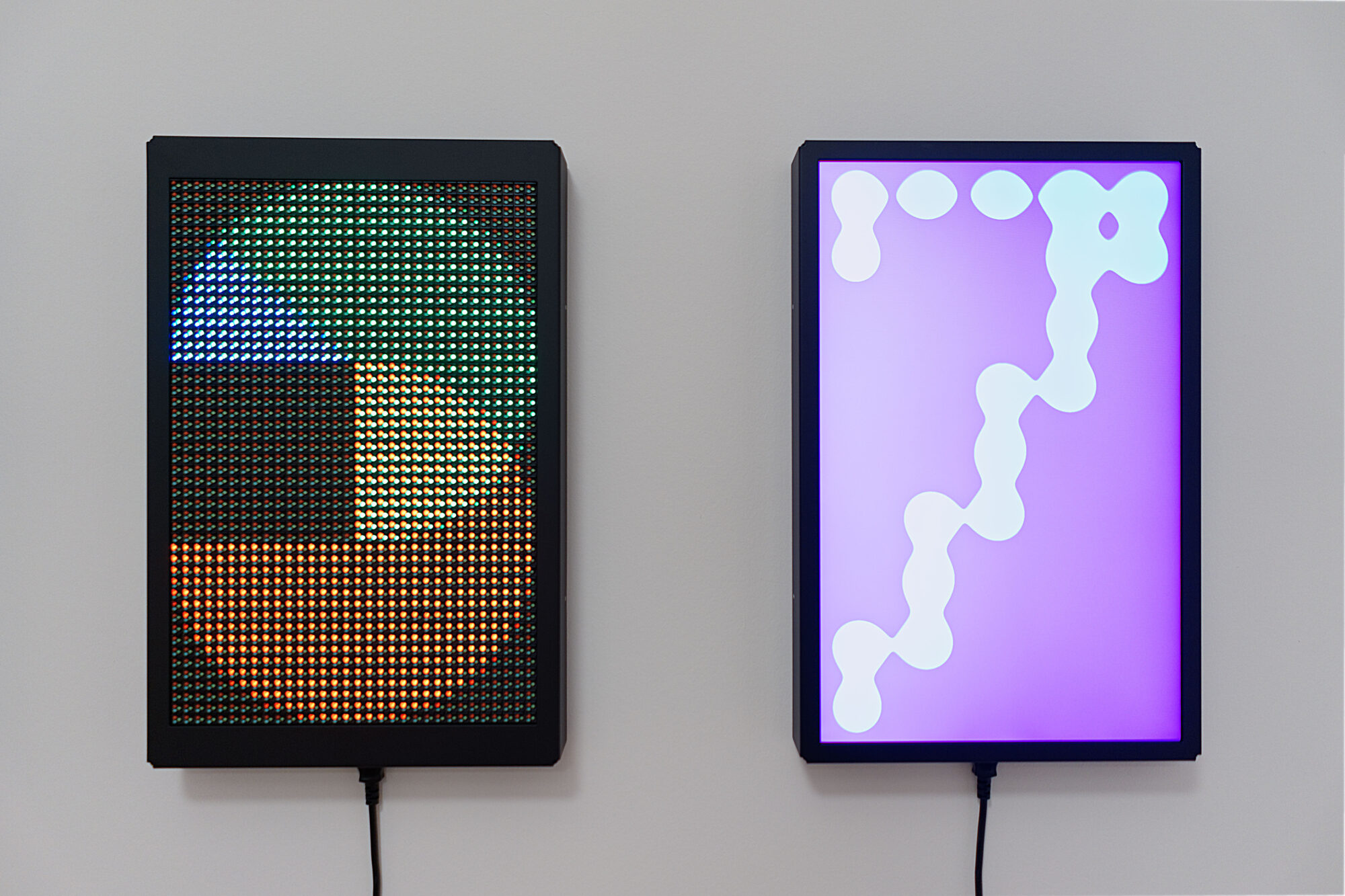Four Transitions is a work about the passage of time. The installation functions primarily as a clock, although the theme is also reflected in the four distinct custom-made displays that show the time, each representing a specific era in the history of these ever-changing display technologies.
Viewed in conjunction, these disparate screens indicate the current time, with each device taking one minute to display a digit. The visual compositions and choreographies employed reflect the quintessence of each technology. Flip-dot displays, LCD, LED, and TFT, the four technologies involved, represent over half a century of technological progress. They were selected because of their very distinctive nature and capabilities, along with the differences in pixel size in each and the resulting variation in the distance at which the human eye can form a coherent image based on the various visual elements.


The black-and-white flip-dot discs are flipped over using electromagnetic energy, emitting a characteristic sound that recalls information boards at airports, stations, and stock exchanges. Chunky monochrome LCD pixels glow in a cold blue due to the electro-optical properties of the liquid crystals, which either block or transmit light. Other hallmarks of LCD technology include very slow data transmission and scope for staggered visualization of this process. LED displays allow almost any color to be mixed by varying the luminosity of three separate light-emitting diodes in red, green, and blue. Here too, image definition is rather rudimentary, with shifts between the three color planes perceptible to the naked eye, similar to rasterization in screen printing. Finally, modern TFT displays use the same technology as LCD displays, but the pixels are much smaller due to the thin-film transistors, and the colors can be mixed at will thanks to multiple color layers. TFT displays output images at such high resolutions and frame rates that the eye generally does not detect the mechanism involved and sees only the image as a whole.


Four Transitions, Jürg Lehni, 2020 Four custom screens, each based on a different display technology: 15 Flip-Dot modules (7×7 pixels per module), 2 LCD Modules (36×52 pixels per module), 6 LED RGB modules (16×16 pixels per module), 1 24" TFT Display module (1920×1200 pixels), controllers and drivers, custom-made backlight, 4 micro-computers, wireless internet connection




Four Transitions, Jürg Lehni, 2020, Process
Each of these technologies was (or is) present in public space and is used at transportation hubs to convey constantly updated information. The unique character and visual qualities of each technology only become apparent as they vanish. Four Transitions addresses the constant evolution of all technology, celebrating inventions rendered obsolete by the inexorable advance of time and scientific progress. The work explores the poetic potential inherent in every technology, a potential that is often only appreciated in hindsight – or through direct comparisons with other technologies.
Konzeption und Ausführung: Jürg Lehni, Selbständiger Gestalter und Künstler
Mitarbeit Visuelle Gestaltung: Urs Lehni, Selbständiger Gestalter und Studiengangsleiter BA VisKom, Hochschule der Künste Bern
Mitarbeit Software Entwicklung: Arno Schlipf, HfG Karlsruhe
Technische Beratung & elektronische Entwicklung: Bruno Thurnherr, Kantonsschule Zürich Nord
Im Auftrag der Christoph Merian Stiftung Basel